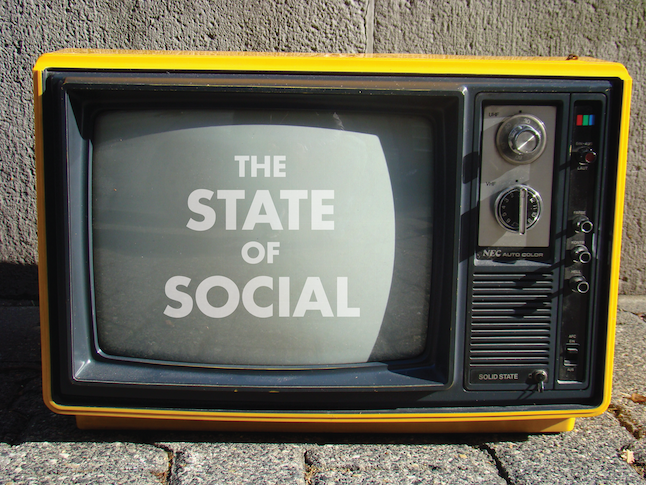
Photo: “Old TV Photo,’ by flickr user stevestein1988 via Attribution License 2.0, with text overlay
Last month, Delucchi Plus sent Senior Content Strategist Drew Lawrence and Digital Strategist/Social Advertising Expert Isel Galvan to New York City for Social Media Week. Throughout that week, Drew and Isel attended countless workshop sessions and industry panels featuring some prominent industry leaders from around the country that discussed the state of social media. This series explores their key learnings.
Ready to feel old? YouTube turned ten years old in February. Back in 2005 three former PayPal employees created the now-Google-owned video streaming mainstay. And it was the last big revolution in online video. The next revolution? It’s happening around us. Social video is finally having its moment in the sun in 2015, and there are are a number of reasons you should be watching what happens in the space.
First off, this movement has been a long time coming. Apps like Vine have attracted a cult following that has been flying the flag of social video for two years. Instagram wanted to get a slice of the pie and went from photo-only streams to include video. It’s driven so much engagement that now the big boys (Facebook and Twitter) are jumping in head first. Instead of relying on YouTube embeds on Facebook and Twitter, each platform has made it much easier to film, post and share video as part of your content mix, and they’re finding better results than on YouTube. I had the chance to attend a session from Jan Rezab, CEO of SocialBakers, while at Social Media Week New York last month, and he had some serious stats to show the shift from YouTube to Facebook:
Twitter is also jumping in to social video, launching their native video player in the past few months:
In Frame: What Does it Mean For My Brand?
How does this translate to your social media content? As bigger brands start making the leap from YouTube to native video on Facebook and Twitter, users end up being more interested in video content. With already three billion views a day, video may end up taking the top spot from photo content on Facebook.
With video becoming a more powerful medium, it’s time to start thinking about it as a primary source of content to tell your stories on social. Think about video the same way you think about your typical content or social advertising. How can you incorporate it into your ongoing social strategy?
Step 1: The Idea
When deciding on a message to get across in a video (and there should be one message to keep it short and simple), you should focus on answering one question: What’s in it for your viewer? Is it to educate on an trending topic or news story? Is it purely entertainment or a much needed break from a busy Monday? Use your current content mix to help pinpoint what are typically your most successful posts and start from there. When you begin brainstorming video ideas, Jonathan Perelman, VP of BuzzFeed Motion Pictures, has an equation to keep in mind:
Simplicity + Surprise = Stickiness
Despite sounding messy, sticky video content is what you want. Sticky video content is hard to get rid of. It’s shared time and again. To achieve a certain amount of stickiness, you need both elements of simplicity and surprise, like these examples I wrote about a few months ago. Another great example is BuzzFeed’s video with Obama:
Step 2: The Execution
When it comes to actually creating video content, it’s not easy. If you’re taking on video duties yourself, you’ll need to set aside time and energy to film your stories, find participants, edit your footage and make sure it’s polished enough for your audience to consume. For small budgets, scrappy tactics and shooting styles come in handy, and while it might not produce the most polished outcome, it’s something to get you started and thinking about video concepts. Plenty of moving videos are created on iPhones and point-and-shoot cameras. Apps like Vimeo’s Cameo have an easy workflow, team asset sharing, and a killer collection of royalty-free soundtrack options. I made a quick example video using Cameo:
If you have the budget, you can employ the help of a videographer or a creative agency to produce videos for you. Vimeo is a good place to look for creative video examples, videographer reels and help you settle on a style you like. Creative agencies can usually also help with distribution and strategy, which can come at a cost, but is usually well worth it. Social video is not a “if you build it, they will come” medium, so the proper distribution and strategy is its own subject entirely.
Whether you’re looking to break ground on social video, already have a steady flow of motivating or entertaining video content or haven’t decided what to do next, video’s big moment in social has arrived, and with it, new opportunities to tell your brand story.
For the full SocialBakers slideshow sourced above, click here.

Posted By
Categories
Plus Points, Social Media, The State of Social
Tags
The State of Social